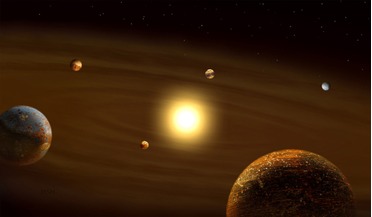 17 April 2020
A six-planet system is discovered and more could be hiding say astronomers
17 April 2020
A six-planet system is discovered and more could be hiding say astronomers
... that helped discover the six-planet system. Their results were also backed up with TESS (Transiting Exoplanet Survey Satellite) data, which also helped reveal that the density of the innermost planet resembles that...
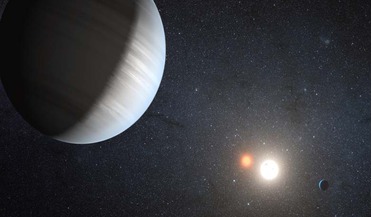 18 April 2016
New Earth-like planet found in GJ 832 planetary system
18 April 2016
New Earth-like planet found in GJ 832 planetary system
... system and it is assumed to play the same role of setting gravitational equilibrium in the system. Artistic representation of the exoplanet Gliese 832c as compared with Earth. Image credit: PHL / UPR Arecibo. The central star in question is GJ 832...
 19 November 2018
Kepler officially retires after receiving final "goodnight" commands
19 November 2018
Kepler officially retires after receiving final "goodnight" commands
... working. As the spacecraft needs three functioning wheels to continally monitor a star’s brightness for signs of Earth-sized exoplanets, its field-of-view had to be switched roughly every three months to compensate for the mechanical glitch. The...
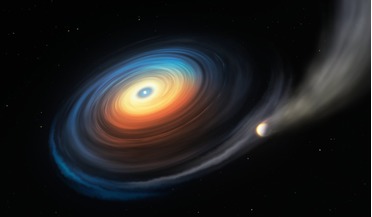 04 December 2019
Giant planet found orbiting a white dwarf for the first time
04 December 2019
Giant planet found orbiting a white dwarf for the first time
... of gas surrounding the white dwarf. What’s more, according to the international team of researchers who found it, the exoplanet orbits the white dwarf at a distance of only 10 million kilometres, or 15 times the solar radius. This would place...
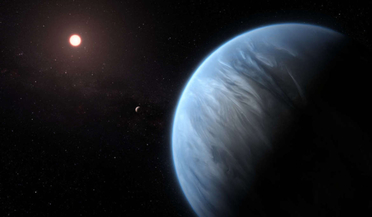 05 October 2020
A dozen "superhabitable" planets better than Earth identified in new study
05 October 2020
A dozen "superhabitable" planets better than Earth identified in new study
... planets a better chance to establish life say the team. After applying these requirements to the 4,500+ known exoplanets discovered to date, Schulze-Makuch and colleagues found 24 top contenders for superhabitable planets. None of them meet...
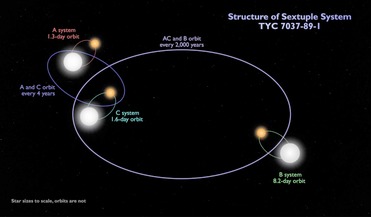 01 February 2021
Astronomers find a rare six star system with three eclipsing binaries
01 February 2021
Astronomers find a rare six star system with three eclipsing binaries
... from a star when an object passes in front of it - an occurrence known as a transit. Although the spacecraft is looking primarily for exoplanets, researchers can use the same method to find multi-star systems; a practise that has recently netted...